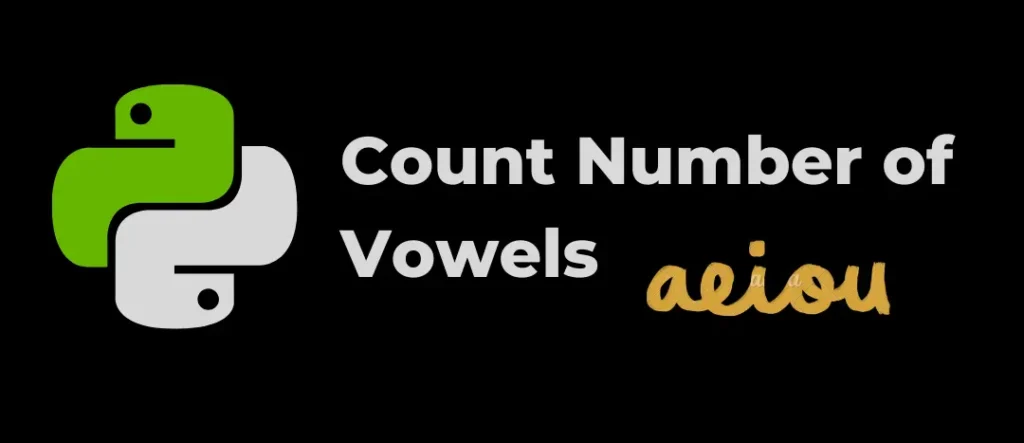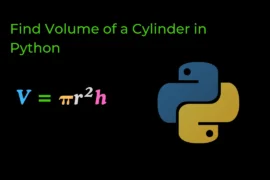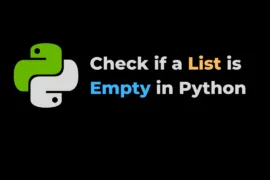In this post, we will write a Python program to count the number of each vowel with detailed explanation and example.

As we all know, a vowel is a set of alphabets containing 5 characters (a, e, i, o, u). Counting the number of vowels present in a given string is a common problem often asked in school and college practicals to develop logical thinking
So today we will see two different ways to solve this problem.
Count the Number of Each Vowel Using Python Dictionary
First, let’s see the steps or algorithm to count the number of each vowel in the given string, and then we’ll proceed to the programming part.
Algorithm
- Ask the user to enter their string and store it in a variable called
my_str. - Transform user input (
my_str) in lowercase. - Create a dictionary called
vowelswhere keys are characters of vowels and the values are initially set to zero ({"a": 0, "e": 0, "i": 0, "o": 0, "u": 0}). - Using for-loop iterate through each character (
char) ofmy_strand check:if char in vowelsthen update thevowelsdictionary by incrementingvowels[char] += 1. - At the end print
vowelsdictionary.
From the above algorithm now we know how we can write a program to count the number of each vowel in Python so now it is time to write a program.
Source Code
my_str = input("Enter your string: ")
my_str = my_str.lower()
vowels = {"a":0, "e":0, "i":0, "o":0, "u":0}
for char in my_str:
if char in vowels:
vowels[char] += 1
print(f"Count of Vowels in given string: {vowels}")Output
Enter your string: learn python with allinpython
Count of Vowels in given string: {'a': 2, 'e': 1, 'i': 2, 'o': 2, 'u': 0}Now let’s modify the above program and rewrite it using dictionary comprehension. it will help us to write a whole code in less number of lines.
Count the Number of Each Vowel Using Dictionary Comprehension
First, let’s see the steps or algorithm to count the number of each vowel in the given string, and then we’ll proceed to the programming part.
Algorithm
- The first two steps are the same as above algorithms.
- At step-3 we create a string containing all the characters of vowels.
(vowels = "aeiou"). - Using dictionary comprehension do:
{key: sum([1 for i in my_str if i in key]) for key in vowels}and store it in variable calledvowels_dict. - At the end print
vowels_dict.
Source Code
my_str = input("Enter your string: ")
my_str = my_str.lower()
vowels = "aeiou"
vowels_dict = {key: sum([1 for i in my_str if i in key]) for key in vowels}
print(f"Count of Vowels in given string: {vowels_dict}")Output
Enter your string: this is my string
Count of Vowels in given string: {'a': 0, 'e': 0, 'i': 3, 'o': 0, 'u': 0}This is all about how we can write a Python program to count the number of each vowel in a given string. I hope this article adds some value to your life thank you for reading. see you in the next article.






